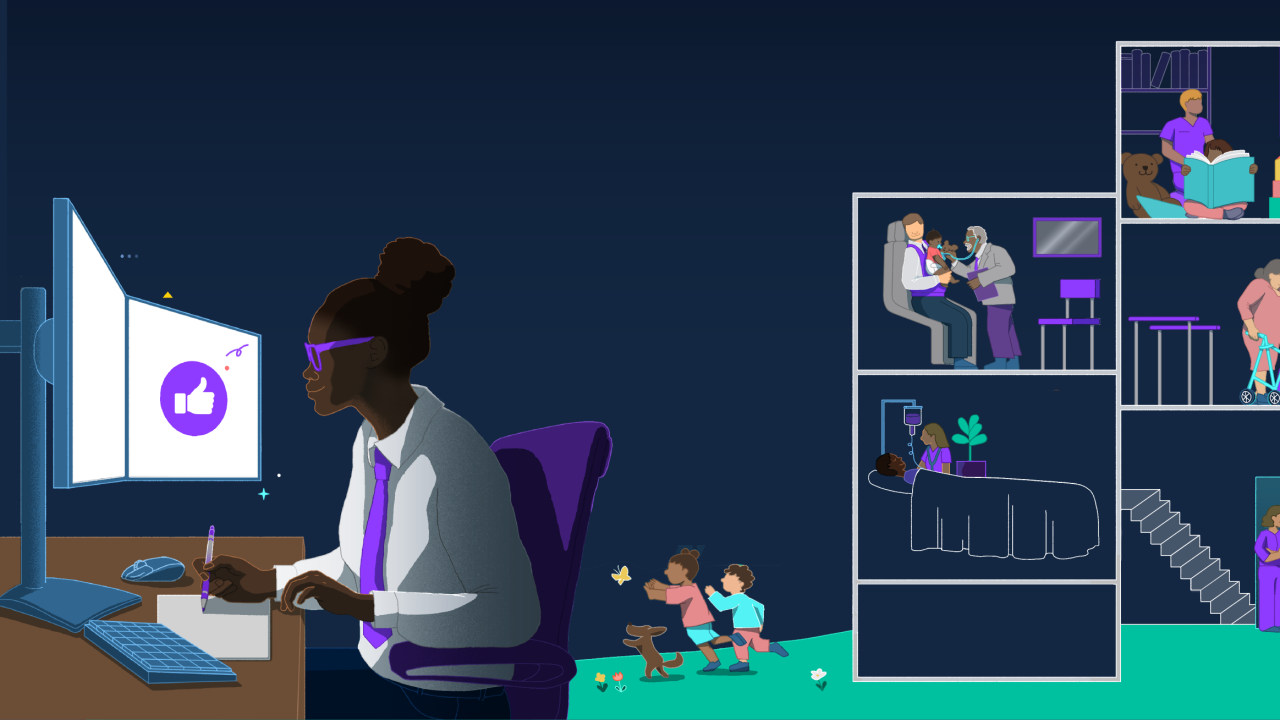In today's always-on work culture, where
The World Health Organization (WHO) has classified burnout as an occupational phenomenon, and American businesses are paying the price.
Poor employee health costs U.S. employers an estimated $225.8 billion annually in lost productivity. The case for
But it's not just about reducing sick days. Employee well-being is now directly
Gallup reports that employees with high well-being are 23% more likely to say they perform better at work. And for every $1 invested in mental health treatment, there's a $4 return in improved productivity, according to the WHO.
And younger generations like Gen Z consider mental health support a core employer responsibility.
Lifesum research highlights that Gen Z and millennials place a high value on workplace well-being and are willing to prioritize it over other factors.
A significant percentage (48%) would quit their job for one that better supports their well-being, and 71% believe they would be more productive if their employer improved their health and wellness. The research also emphasizes the growing importance of functional nutrition and its impact on workplace outcomes.
As expectations around workplace wellness rise, particularly among younger generations like Gen Z, who consider mental health support a core employer responsibility, employers are looking for new ways to keep pace. That's where artificial intelligence (AI) is stepping in.
Read more:
AI enters the wellness conversation
AI is transforming the wellness landscape by making health support more proactive, personalized and scalable.
From biometric monitoring to mental health chatbots, from predictive analytics to real-time engagement tracking, AI is already being deployed across HR tech stacks to better understand and support employees.
Post-pandemic, demand for AI-powered wellness solutions has exploded. The global digital health market, heavily influenced by AI, exceeded $11 billion in 2023.
Employers are seeking tech that meets workers where they are; distributed, diverse, and digitally savvy.
Startups and established players alike are responding.
Calm Business offers AI-driven mindfulness experiences tailored to the user's stress patterns.
Headspace for Work provides personalized well-being journeys based on employee input and behavioral data.
And Lifesum's corporate service, used by organizations like Amazon and GE, allows their employees to use its AI-powered Multimodal Tracker, enabling employees to effortlessly log meals via photo, voice, text, or barcode, redefining meal tracking with unmatched ease and engagement to help them make healthier choices and build sustainable, long-term health habits.
The productivity connection
Wellness isn't just a matter of conscience; it's a matter of competitiveness.
AI-powered tools help businesses detect early signs of burnout by analyzing communication patterns, calendar data, and feedback loops. This allows HR leaders to intervene before problems escalate.
Behavioral science also plays a key role.
AI can deliver personalized nudges that help employees form healthier habits over time, whether it's suggesting a walk after too much screen time or reminding someone to take a break before a high-stress meeting. These micro-interventions compound over time, creating healthier workforces.
Read more:
Wellness in a hybrid world
With remote and hybrid work now the norm, supporting employee health has grown more complex.
The office gym and in-house therapist no longer cut it. AI steps into this gap by offering consistent, 24/7 support that doesn't depend on geography.
This tech-driven accessibility is especially important for organizations with global teams or frontline workers. Whether it's delivering sleep support to a shift worker or stress-relief exercises to a remote designer, AI enables inclusive, democratized well-being.
Corporate wellness solutions like that of Lifesum and FIIT are helping organizations combat employee burnout and address the U.S.'s multi-billion annual productivity loss, offering employees AI-powered personalized nutrition plans and expert-led workouts, wherever they are, all seamlessly delivered through a corporate subscription.
DEI, ethics, and the data dilemma
AI also has the potential to enhance diversity, equity and inclusion in wellness.
Algorithms can uncover disparities in engagement, stress levels, or access to support across different demographic groups. This helps employers respond with more equitable policies.
But AI isn't without its challenges. Wellness data is deeply personal. Employers must handle it with the utmost care, ensuring compliance with regulations like GDPR and HIPAA.
Algorithmic bias is another concern: If AI is trained on non-diverse datasets, it risks reinforcing existing inequalities.
To succeed, AI-powered wellness must be deployed ethically, transparently, and in combination with human support systems. Technology can augment care, but it should never replace empathy.
A human + AI model for the future
The most successful wellness strategies blend machine intelligence with human understanding.
Think AI surfacing early warning signs, followed by outreach from a trained coach or counselor. Or personalized sleep and nutrition advice, like that offered by Lifesum and OURA, that's supplemented by group wellness challenges and team support.
This hybrid model empowers employees to take charge of their own health, while giving HR leaders real-time insights that drive smarter decisions. And it's not just about physical or mental health; well-being includes financial wellness, social connection and purpose. AI tools are evolving to support all these dimensions.
Read more:
What comes next?
As AI becomes more embedded in everyday work tools like Microsoft Viva, SAP SuccessFactors, and Slack, wellness support will become increasingly ambient; subtle, continuous, and built into the flow of work.
Employers that embrace this shift will future-proof their organizations. They'll attract younger talent, improve retention and build more resilient cultures. But to get it right, they must treat AI not as a quick fix, but as part of a broader strategy: one that includes robust data governance, inclusive design, and a deep respect for employee agency.
Wellness is no longer a perk. It's a strategic imperative. And with AI as a partner, the future of employee health and productivity looks brighter, smarter and more human than ever.






